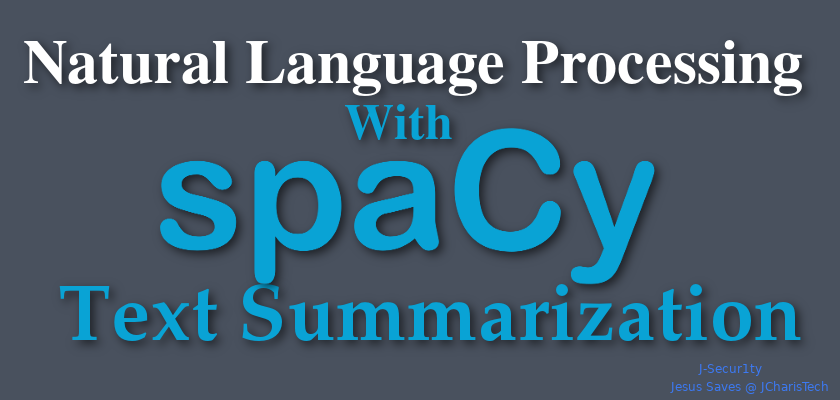How to make a text summarizer in Spacy.
In this tutorial we will learn about how to make a simple summarizer with spacy and python. We will then compare it with another summarization tool such as gensim.summarization. So what is text or document summarization?
- Text summarization is the process of finding the most important information from a document to produce an abridged version with all the important ideas.
- The Idea of summarization is to find a subset of data which contains the “information” of the entire set.
One of the applications of NLP is text summarization and we will learn how to create our own with spacy.
The basic idea for creating a summary of any document includes the following:
- Text Preprocessing (remove stopwords,punctuation).
- Frequency table of words/Word Frequency Distribution – how many times each word appears in the document
- Score each sentence depending on the words it contains and the frequency table
- Build summary by joining every sentence above a certain score limit
Let us start
In [1]:
# Load Pkgs
import spacy
In [2]:
# Text Preprocessing Pkg
from spacy.lang.en.stop_words import STOP_WORDS
from string import punctuation
In [3]:
# Build a List of Stopwords
stopwords = list(STOP_WORDS)
In [4]:
document1 ="""Machine learning (ML) is the scientific study of algorithms and statistical models that computer systems use to progressively improve their performance on a specific task. Machine learning algorithms build a mathematical model of sample data, known as "training data", in order to make predictions or decisions without being explicitly programmed to perform the task. Machine learning algorithms are used in the applications of email filtering, detection of network intruders, and computer vision, where it is infeasible to develop an algorithm of specific instructions for performing the task. Machine learning is closely related to computational statistics, which focuses on making predictions using computers. The study of mathematical optimization delivers methods, theory and application domains to the field of machine learning. Data mining is a field of study within machine learning, and focuses on exploratory data analysis through unsupervised learning.In its application across business problems, machine learning is also referred to as predictive analytics."""
In [5]:
document2 = """Our Father who art in heaven, hallowed be thy name. Thy kingdom come. Thy will be done, on earth as it is in heaven. Give us this day our daily bread; and forgive us our trespasses, as we forgive those who trespass against us; and lead us not into temptation, but deliver us from evil
"""
In [7]:
nlp = spacy.load('en')
In [8]:
# Build an NLP Object
docx = nlp(document1)
In [9]:
# Tokenization of Text
mytokens = [token.text for token in docx]
Word Frequency Table
- dictionary of words and their counts
- How many times each word appears in the document
- Using non-stopwords
In [10]:
# Build Word Frequency
# word.text is tokenization in spacy
word_frequencies = {}
for word in docx:
if word.text not in stopwords:
if word.text not in word_frequencies.keys():
word_frequencies[word.text] = 1
else:
word_frequencies[word.text] += 1
In [11]:
word_frequencies
Maximum Word Frequency
- find the weighted frequency
- Each word over most occurring word
- Long sentence over short sentence
In [12]:
# Maximum Word Frequency
maximum_frequency = max(word_frequencies.values())
In [13]:
for word in word_frequencies.keys():
word_frequencies[word] = (word_frequencies[word]/maximum_frequency)
Word Frequency Distribution
In [14]:
# Frequency Table
word_frequencies
Out[14]:

I love your content, just continue, you are the best out there
Thanks a lot Selmane, glad it was helpful.
Amazing work.
Keep it up.
Thanks alot Kajaria , Glad it was helpful.
Muchas gracias. ?Como puedo iniciar sesion?
Muchas gracias. ?Como puedo iniciar sesion?
Muchas gracias. ?Como puedo iniciar sesion?
Muchas gracias. ?Como puedo iniciar sesion?
Muchas gracias. ?Como puedo iniciar sesion?
Muchas gracias. ?Como puedo iniciar sesion?